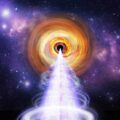CERN’s Large Hadron Collider has momentarily transformed lead into gold, the long-sought-after goal of medieval alchemists, as confirmed by recent experiments conducted with the ALICE detector.
Long relegated to fiction and myth, chrysopoeia, or the pursuit of transmuting lead into gold, was impossible until 20th-century nuclear physics. Although the elements share similar densities, their chemical natures are distinct, although some earlier laboratory work had already used knowledge of radioactive decay, as well as techniques involving the bombardment of neutrons or protons to create gold.
Now, the recent ALICE observations have produced an entirely new method, where lead nuclei near-misses were successful in accomplishing the task, albeit briefly.
The Power of the Large Hadron Collider
Following the universe’s most violent event—the Big Bang—a hot atomic soup known as quark-gluon plasma permeated the cosmos. The Large Hadron Collider (LHC) recreates this extreme state on a micro scale by colliding lead nuclei at high speeds. However, most collisions are near misses, close enough for intense photon-photon or photon-nucleus interactions to occur.
Each lead nucleus, composed of 82 protons, generates a powerful electromagnetic field. When accelerated to 99.999993% the speed of light, these fields compress into pancake-like shapes, emitting intense photon pulses. This flattening can trigger a process known as electromagnetic dissociation, where a photon perturbs a nucleus enough to eject protons and neutrons. Removing just three protons from lead transforms it into gold, which has 79 protons.
“It is impressive to see that our detectors can handle head-on collisions producing thousands of particles, while also being sensitive to collisions where only a few particles are produced at a time, enabling the study of electromagnetic ‘nuclear transmutation’ processes,” said ALICE spokesperson Marco Van Leeuwen in a statement.
Observing Transmutation
A key ALICE instrument, the zero-degree calorimeters (ZDC), was essential for these observations. The ZDC measures how many photon-nuclear interactions result in the loss of one, two, or three protons, alongside at least one neutron. These interactions can yield a variety of elements including thallium, mercury, and gold—depending on the number of protons ejected.
ZDC data showed that thallium and mercury were more commonly produced, but the LHC still generated up to 89,000 gold nuclei per second during observations. However, this process doesn’t produce stable, lasting gold. The newly created gold nuclei are highly energized and decay in fractions of a second when they collide with the LHC’s walls or the ZDC, disintegrating into individual particles.
No Riches Yet
After analyzing data from 2015 to 2018, the ALICE team estimated that the LHC created approximately 86 billion gold nuclei during four separate experiments. Still, that equates to just 29 trillionths of a gram—nowhere near enough to make even a speck of jewelry. Even with recent LHC upgrades increasing production rates, the amount of gold produced remains vanishingly small.
“Thanks to the unique capabilities of the ALICE ZDCs, the present analysis is the first to systematically detect and analyse the signature of gold production at the LHC experimentally,” says Uliana Dmitrieva of the ALICE collaboration.
“The results also test and improve theoretical models of electromagnetic dissociation which, beyond their intrinsic physics interest, are used to understand and predict beam losses that are a major limit on the performance of the LHC and future colliders,” adds John Jowett, also of the ALICE collaboration.
The paper “Proton Emission in Ultraperipheral Pb-Pb Collisions at √𝑠𝑁𝑁=5.02 TeV” appeared on May 7, 2025 in Physical Review Journals.
Ryan Whalen covers science and technology for The Debrief. He holds an MA in History and a Master of Library and Information Science with a certificate in Data Science. He can be contacted at ryan@thedebrief.org, and follow him on Twitter @mdntwvlf.

